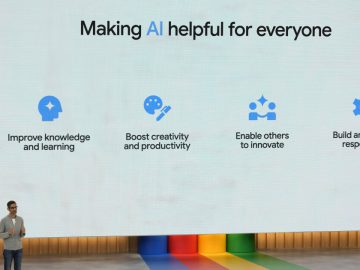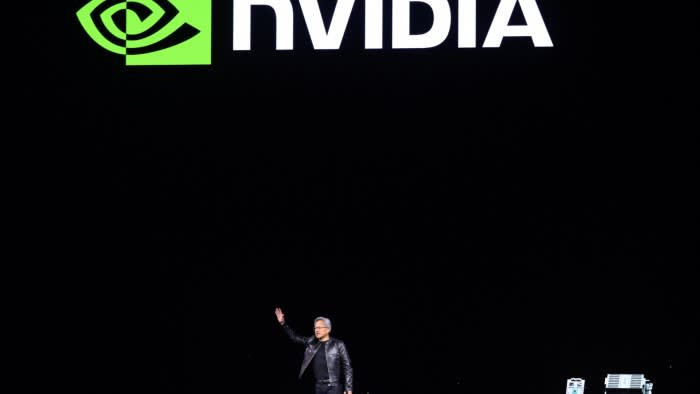Advertisers love talking about AI, but they face a big problem: consumers are suspicious of the tech and don’t want to be bombarded with messaging about it.
This issue was on full display at the Olympics, where Google face-planted with an ad for its Gemini AI tool. The “Dear Sydney” ad, which showed a dad using AI to help his daughter write a letter to her athlete idol, sparked widespread backlash, leading Google to pull the spot. In a statement, Google said it was trying to show AI’s ability to enhance human creativity rather than replace it, but critics derided it as tone-deaf.
“There seems to be this fundamental misunderstanding of what we should be using AI for,” said Iain Thomas, who cowrote a book on AI, “What Makes Us Human?,” and is a founder of Sounds Fun, an agency that helps marketers harness AI. “We shouldn’t be using it to write poetry or books, but take care of the grunt work so we can expand our creativity in different ways.”
The AI messaging problem reaches well beyond Google. A June Toys “R” Us ad that it touted as being made by OpenAI’s text-to-video tool Sora got mixed reviews, with some saying it sent the message that filmmakers can be replaced with AI. An “AI-powered” Under Armour ad in March was accused by some in the creative community of using others’ work without giving proper credit.
These high-profile missteps speak to a fundamental issue facing advertisers: Consumers don’t yet trust AI and are less likely to buy AI-powered products. A study from researchers at Washington State University published in the Journal of Hospitality Marketing & Management earlier this year found that US consumers were less likely to buy products like television sets, medical devices, or financial services products if “artificial intelligence” was included in the product description.
It’s easy to understand the unease, with growing fears about AI’s potential to upend jobs and rob us of our humanity. A November Pew study showed growing concern about AI, with 52% of Americans more concerned than excited about it, an increase from 37% two years earlier.
But advertisers might be vulnerable to their own positive thinking about AI. A Yahoo survey released in February with Publicis Media showed that advertisers were twice as likely as the general public to view AI positively.
Toys “R” Us used OpenAI’s Sora to create this ad.
YouTube
Companies are making big investments in AI and spending millions on marketing
Marketers can’t ignore AI, however.
Enterprises are expected to spend more than $40 billion on generative AI this year, and many companies are looking to their marketing departments to help trumpet those investment decisions.
According to data from MediaRadar, companies spent more than $107 million on ads marketing AI-related products and services in the first half of 2024, up from the $5.6 million total spent in the same period last year. To date, 575 companies have bought ads to market AI products in 2024, up from 186 in all of 2023.
“There is a Catch-22 because they need to differentiate, and they’re using AI to do it,” Josh Campo, CEO of the ad agency Razorfish, said of advertisers, adding it’s especially tricky for companies like financial services and healthcare firms that trade in sensitive personal data.
“You can talk about AI but don’t talk about it as much as you are. It’s not a strategy, it’s a tool,” he said. “We’re advising them to focus on: What is the benefit in terms of the human experience?”
Matt Rebeiro, executive strategy director at the creative agency Iris, said business-to-business brands are also embracing AI in their ads, using it as a marketing shorthand to demonstrate how it can help their clients drive efficiencies. But he added that “AI” in and of itself isn’t a unique selling proposition, and that marketers need to focus on the benefits and outcomes.
“I don’t care if AI is making the sausage, provided it’s tasty,” Rebeiro said. “In the same way, I wouldn’t trumpet that my new product was designed in Photoshop, so why would I talk about how my product was designed using AI? It might be new, but it isn’t relevant to the customer in the majority of cases.”
Data shows the best AI ads have a human-led narrative
System1, which rates TV ads on their potential to drive long-term growth for brands, found that the AI-focused ads that perform best with consumers are those that focus on a human-led narrative. The research company asks a panel of consumers across several countries to indicate how they feel about the ad they’re viewing from a list of emotions ranging from contempt and disgust to happiness and surprise.
One of the top-performing US ads of 2023 came from Adobe, which ran a spot featuring a girl using AI to create a birthday card. The ad scored 5.2 out of a top score of 5.9. In System1’s tests, the ad got some negative responses from viewers in its early moments when the AI element was introduced, but it dissipated when the ad showed that the tool was helping rather than undermining the girl’s creativity.
Another top scorer, coming in at No. 4, was Dove’s “The Code” ad. When AI-generated beauty images were shown, the ad generated a surge in negative responses from System1’s testers, but the response subsided when Dove showed examples of realistic beauty and images of everyday women. The ad concludes with the promise that the brand “will never use AI to create or distort women’s images.”
On the negative side, Microsoft’s Olympics ad, “They Say” — which showed how people could overcome doubters and achieve their ambitions using Microsoft’s Copilot chatbot — scored a modest 2.9. System1 blamed its poor performance on an overemphasis on the negative instead of the feats that AI technology can help people accomplish.
Thomas said some consumer companies have hit the right note when they used AI to personalize an experience or do something new. A Virgin ad featuring JLo humorously showed people using AI to mimic the star while inviting people to send out a personalized invitation to book a cruise, for example. Another was a Cadbury tool that let people upload their photos onto classic Cadbury posters.
“Trying to do everything with it is in bad taste,” Thomas said of AI. “People are getting sensitive to how things are made.”




